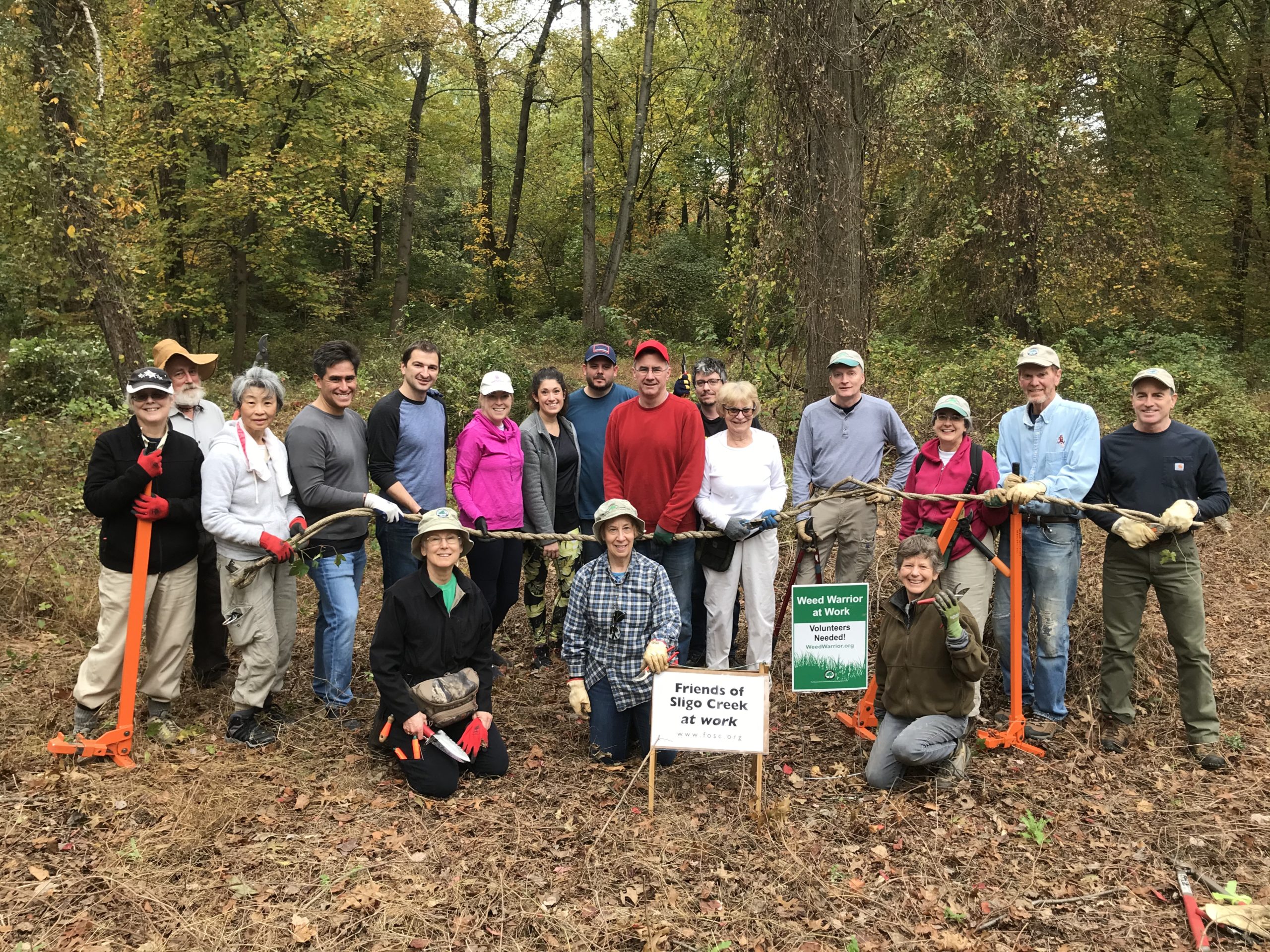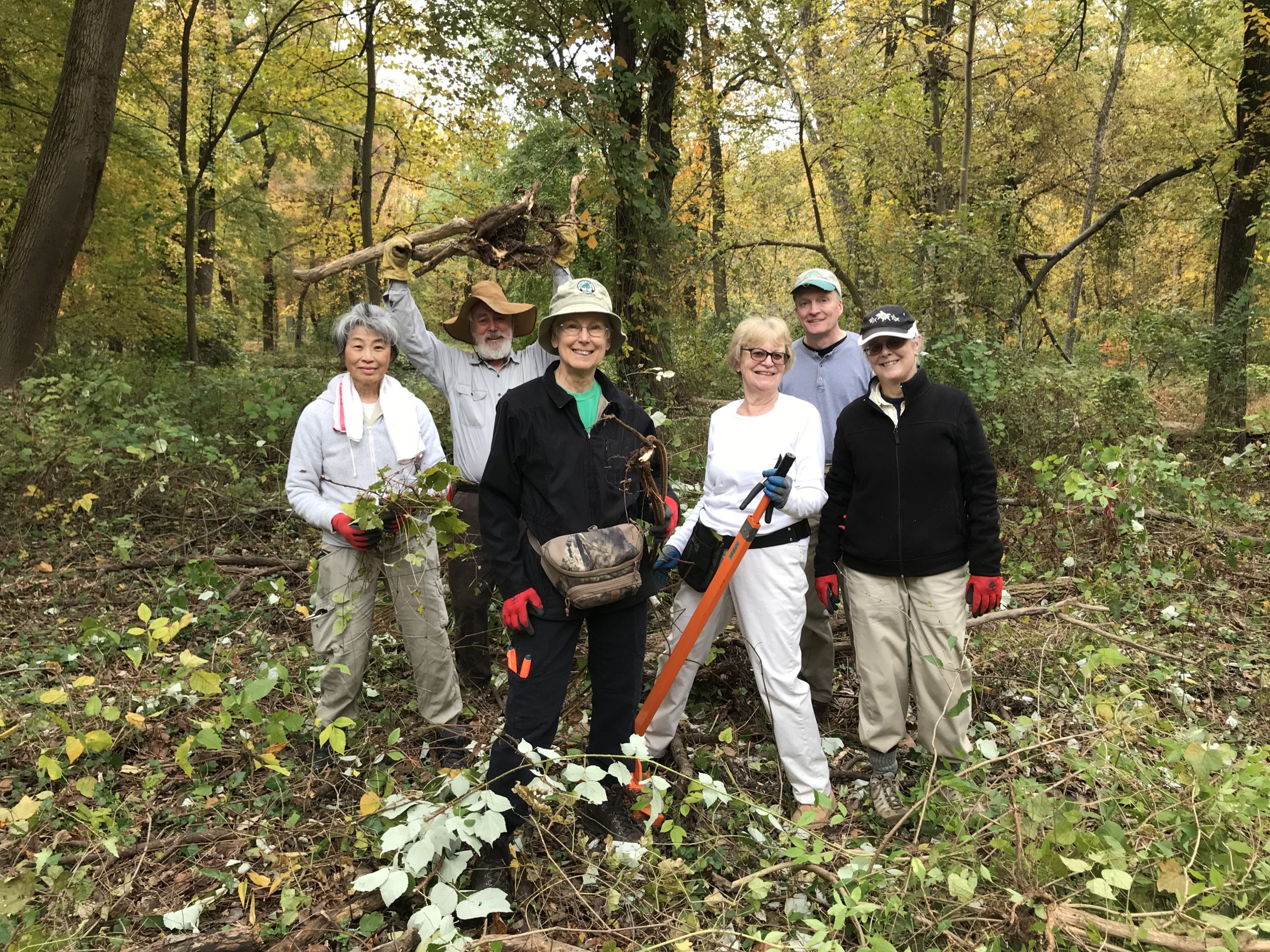Identify and remove invasive plants in Sligo to allow native plants and wildlife to thrive.
Removing Invasive Plants
Consider this:
Twenty years from now we can have ten alien plant species covering much of the Park, or we can have our 372 native plants thriving in impressive variety!
Why Remove Invasive Plants?
We are in the process of losing the Park to non-native, invasive plants. Most of these plants were brought into this country intentionally as ornamentals. These plants found a good environment to grow and reproduce with few, if any, predators or diseases. Most grow far faster than native species and out-compete them.
The FOSC RIP Program (Removing Invasive Plants) was formed to control and remove these unwanted plants. Since RIP’s inception in 2004, most non-native invasive vines been removed from mature trees in our Park. Many non-native shrubs have also been removed so native shrubs can be reintroduced either by planting or natural seed dispersal. The Resources on Invasive Plants page has detailed information on common invasives that have migrated into Sligo Creek Park, typically from yards and landscaping.
Though a constant effort, invasive removal work is showing progress. There are fewer non-native plants in some parts of the park now and new growth of native species. No doubt climate change will bring to the Park some new species native to the southern states, but these will also bring their predators.
FOSC Weed Warrior Listserv
If you are a Certified Weed Warrior and want to join our FOSC Weed Warriors listserv, request an invitation by emailing [email protected], or follow the directions at the FOSC-WeedWarriors Listserv.
Spring 2024 Top Invasives
-
- Bush Honeysuckle
- Porcelainberry
- Multiflora Rose
-
English Ivy
- Emerging invasives Italian Arum and Incised Fumewort (see photos this page)
- Bush Honeysuckle
- Porcelainberry
- Multiflora Rose
- English Ivy
- Emerging invasives Italian Arum and Incised Fumewort (see photos this page)
FOSC Weed Warriors
Tips & Tricks
Invasive Plant List of 1970
The invasive plants present in Sligo Creek park 50 years ago were documented by Dorothy Salisbury in her Plant List of 1970-71 and her companion guide, Salisbury Notes. Many “occasionally” present invasive plants and vines in 1970 are common scourges today.
About Weed Warriors
Since 2004, Friends of Sligo Creek has partnered with the Montgomery County Parks Department on a non-native invasive plant removal program. Called Weed Warriors, Montgomery Parks developed the program to provide training, advice and support for removing non-native plants. Weed Warrior Supervisors lead Sligo volunteers in the removal of non-native invasive plants from the Park. We’d love to have you join in. Upcoming events are posted under Events.
Weed Warrior training is conducted by Montgomery Parks. With Weed Warrior certification you can obtain Parks approval to work on your own in addition to organized events. To find out about on-line training, visit the Parks Dept Weed Warrior webpage or email the Weed Warrior program at: [email protected].
Emerging Invasives
Italian Arum and Incised Fumewort
If you see either of these emerging invasive plants, please report it on iNaturalist. The NCR-EDRR (the National Capital Region-Early Detection, Rapid Removal) project will pick it up and add it to the EDRR map and database.
In Partnership: Weed Warriors
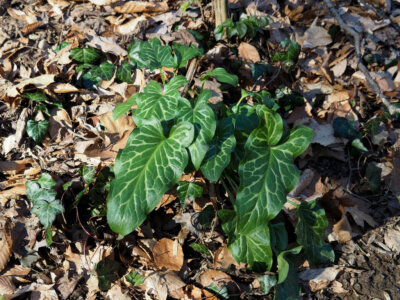
Italian arum
Italian Arum has an out-of-phase growth and seeding behavior.
Native Alternatives to Italian Arum
The Lewis Ginter Botanical Garden recommends the Maryland Invasive Species Council choices for native alternatives to Italian Arum: Cardamine diphylla or “toothwort”, which also thrives in moist, shady places during winter. Other replacements for arum include Arisaema triphyllum (Jack-in-the-pulpit), Asarum canadense (Canada wild ginger), Pachysandra procumbens (Allegheny spurge) and Podophyllum peltatum (may-apple).
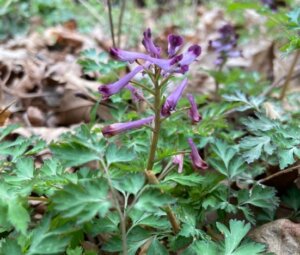
Incised Fumewort (Corydalis incisa)
The incised fumewort page of the NCR-PRISM project on iNaturalist has helpful information by NCR-PRISM coordinator Sara Tangren on how to distinguish this invasive from the native fumewort – essentially, the invasive has purple flowers and the native yellow flowers. See the map too.
Along the southern border of the Beltway at Forest Glen Rd and Sligo Creek, there is a thriving wetland/floodplain. Weed Warriors have devoted many hours to removing the invasive vines choking the newly planted as well as established trees, including some large red cedars. Check out the video!
HB 0090, Control of Running Bamboo, was reworked to become Chapter 517, Section 1–1318 of the Annotated Code of Maryland. Governor Moore signed it on May 8, 2023. It allows counties or municipalities to regulate by ordinance the sale, planting, and growing of aggressive bamboo, including bamboo in the genus Phyllostachys. Counties and municipalities are also empowered to include enforcement measures through civil fines and requirements to mitigate bamboo damage.
The original bill would have prohibited property owners from allowing running bamboo to grow on their property without proper upkeep, and from allowing it to spread to adjoining properties or a public right-of-way. Violations would have carried a fine of up to $50 for a first offense. A second offense would have imposed a fine not exceeding $200. Maximum fines could not have exceeded $3,000 under the bill. It would also have required nurseries to label two species of NNI bamboo as tier 2 invasives though they could still be sold.
This legislation would have been a first step in addressing the sale of NNI plants. Bamboo is still legal to sell in Maryland.
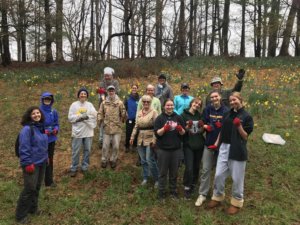
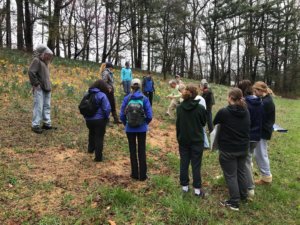
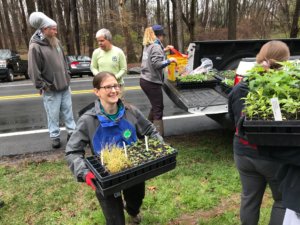
Weed Warriors held a great planting work day in April. We had high school students and staff, Parks staff and Sligo Weed Warriors who planted hundreds of native plant plugs. Thank you to everyone who took part planning and planting!
Jim Anderson, Weed Warrior Supervisor, longtime Invasives/RIP Committee chair, and former FOSC Board member, was featured in a May 2021 Voice of America video. Jim shows the extent of invasive plant Lesser Celandine in just one section of Sligo and urges people to become certified Weed Warriors to give native plants a chance to get reestablished and rebuild the ecosystem.
Invasives/RIP/Weed Warrior Committee: Open to All
Become a part of the FOSC Invasives/RIP/Weed Warrior team! Contact the Committee Chairperson Walter Mulbry at [email protected] or through the Contact Form on the Contact page.
Weed Warriors at Work
Summer 2021
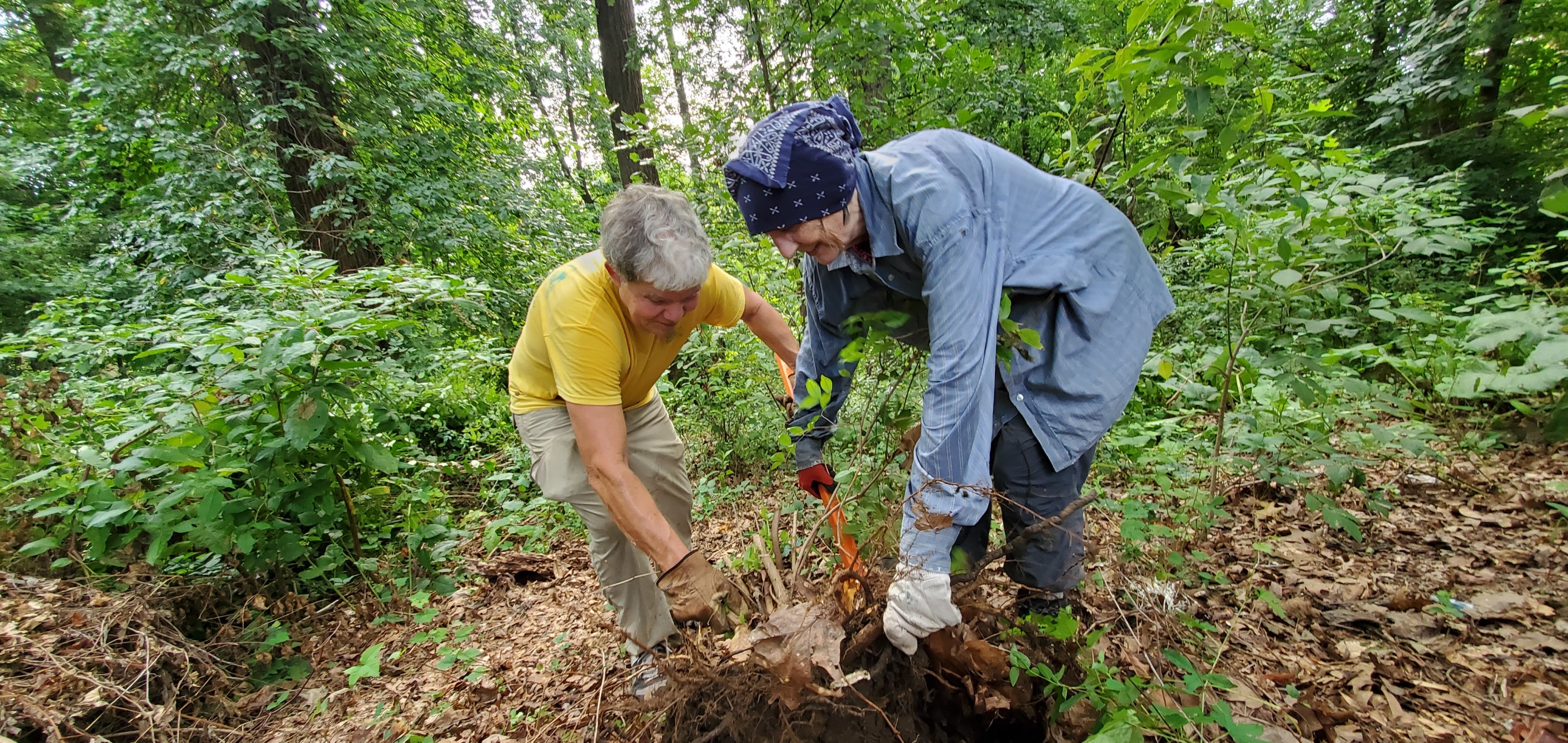
Weed Warriors Walter Mulbry and Barbara Francisco wrestling a bush honeysuckle plant from the hill south of the Long Branch Library in Section 10.

A happy Weed Warrior after liberating the sapling from some overpowering vines.
Photos courtesy of Ed Murtagh and Christine Dunathan
Fall 2019
Photos courtesy of Montgomery Parks






